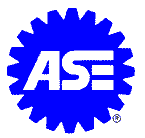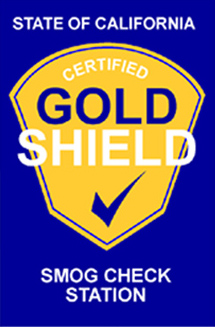 |
BOB REINHEIMER'S
RICHMOND AUTO REPAIR
310 SOUTH VAN NESS AVENUE
SAN FRANCISCO, CALIFORNIA 94103
(415) 861-3202
A FULL SERVICE AUTO REPAIR FACILITY
SERVICES PROVIDED: MONDAY-FRIDAY 9:00AM-5:30PM
ALL REPAIRS ARE WARRANTED FOR 90 DAYS OR 4,000 MILES, WHICHEVER OCCURS FIRST (PARTS & LABOR)
QUALITY MAJOR MECHANICAL REPAIRS
DEPENDABLE - RELIABLE - ETHICAL
|
 |
GOLD SHIELD TEST AND REPAIR STATION
HISTORY OF THE SMOG CHECK
HISTORY OF THE SMOG CHECK
INSPECTION & MAINTENANCE PROGRAM
1967 The first federal Clean Air Act passes. It provides
authority to establish air quality standards. It is revamped in
1970 laying the foundation for regulatory efforts
throughout the next three decades.
1977
Amendments to the federal Clean Air Act require states to comply with federal
emission standards, prompting California and other states to create vehicle
inspection programs.
1982
The California Legislature passes a law creating the state's first Smog Check
program. It is signed by Governor
Jerry Brown.
1984
California's first inspection program begins. Vehicles in most areas cannot be
registered without passing a Smog Check inspection once every two years.
California's Department of Consumer Affairs/Bureau of Automotive Repair (DCA/BAR)
oversees the program.
1990
In amendments to the federal Clean Air Act, the United States Environmental
Protection Agency (USEPA) mandates a plan for enhanced emissions testing. It
calls for the elimination of private station vehicle inspections (a $480 million
a year industry in California). The USEPA proposes, in addressing a potential
conflict of interest among stations that both test and repair vehicles, that
every California vehicle owner obtain a Smog Check inspection at one of only 200
centralized "test only" centers contracted by the state. Federal
officials threaten to withhold $500 million in federal highway funds if the
state does not comply.
1993
The Wilson Administration and the California Legislature enter into lengthy
negotiations with the USEPA in an attempt to preserve motorist convenience and
private sector investment in the Smog Check program.
1994
An alternative plan, devised by a bipartisan legislative majority and signed
into law by Governor Pete Wilson, enhances the existing Smog Check program. The
compromise plan focuses on identifying and repairing "Gross
Polluters," those vehicles that dramatically exceed federal and state
emissions regulations and are responsible for half of all vehicular smog. The
compromise plan is designed to achieve a reduction in vehicle emissions that
will meet federal standards without unduly inconveniencing motorists. Only 15
percent of vehicles in Enhanced Areas, California's smoggiest regions, will be
sent to specially authorized Test-Only stations. The overwhelming majority of
vehicle owners will continue obtaining emissions tests at traditional testing
sites.
April 1996
Smog Check stations throughout the state install and begin to use new Electronic
Transmission (ET) computer technology to enable DCA/BAR to identify and track
Gross Polluters, while helping to prevent the fraudulent issuance of smog
certificates to vehicles that actually fail. With ET, "on-line" Smog
Checks are conducted while linked by computer to DCA/BAR and, at the conclusion
of a passing emissions test, an electronic smog certificate is immediately
transmitted to the Department of Motor Vehicles.
At the same time, California's new Gross Polluter law becomes enforceable with
the installation and use of ET, requiring that vehicles identified as Gross
Polluters be repaired and then go to a Test-Only station to have the repairs
confirmed.
September 1996
USEPA gives final approval to California's State Implementation Plan, which
includes enhancements to the Smog Check program.
November 1997
Using a High Emitter Profile of vehicles considered most likely to fail their
Smog Checks, DCA/BAR directs certain vehicle owners to Test-Only stations as
part of the requirement to send 15% of the vehicles in Enhanced Areas to such
facilities. The first group numbers 1,500, but this number will be expanded to
match Test-Only station capacity.
December 1, 1997
All Enhanced Area stations begin installing a BAR-97 Emissions Inspection System
with a dynamometer. Stations are still allowed to give the older test until
later in 1998, to give technicians time to familiarize themselves with the new
equipment.
Additionally, a Gross Polluter Certification Pilot begins. It allows a randomly
selected group of Gold
Shield stations to certify the Gross Polluters they repair rather than
sending these vehicles to Test-Only stations for certification.
January 1, 1998
Major new laws go into effect. The legislation exempts vehicles made in 1973 and
older from the Smog Check program as well as vehicles 4 model years and newer
from the biennial inspection requirement. The new laws also create a Repair
Assistance Program for low-income motorists to help them pay for
emissions-related repairs.
A new Referee Center system working under contract with the California Community
Colleges Foundation begins.
June 8, 1998
Stations in Enhanced Areas are required to perform ASM tests using dynamometer
equipment, a treadmill for vehicles, on all vehicles. This new equipment tests
vehicles under actual driving conditions and tests for an additional pollutant,
oxides of nitrogen or NOx, the chemical that makes smog brown. However, a small
number of vehicles with full-time four-wheel drive, all-wheel drive, and
traction control are not able to be tested on the dynamometer.
2000
San Francisco And The Greater Bay Area Become Enhanced Smog Check Areas.
A New Gold Shield and CAP Repair Station Program is implemented in the State.
The new Gold Shield and CAP Repair Station Program provides Economic Hardship Help
with emission repairs on vehicles failing the Smog Check, for low income households,
with a co-payment of $20.00 for qualifying owners and motorists. Test-only directed
vehicles that fail the Smog Check also qualify for emission repair assistance,
with a co-payment of either $20.00, if they qualify as low income households,
or $100.00 if they do not.
The amount of money that must be spent on repairs by vehicle owners to qualify
for a Repair Cost Waiver becomes $450 in all areas of the state. Also, the
Economic Hardship Extension becomes available for low-income motorists.

